
You are using an out of date browser. It may not display this or other websites correctly.
You should upgrade or use an alternative browser.
You should upgrade or use an alternative browser.
Help me identify this old oil stone?
- Thread starter carpenteire2009
- Start date

Help Support UKworkshop.co.uk:
This site may earn a commission from merchant affiliate
links, including eBay, Amazon, and others.
jimi43
Established Member
It looks like a slate to me.
Plain black whetstones are very difficult to identify without some guesses based on where it was found and any other clues.
I have a number of slates...all of which are Welsh and they produce quite a nice edge on tools...particularly the Yellow Lake ones...
I'll hand over to ALFIE....this one on the right is a Welsh slate...
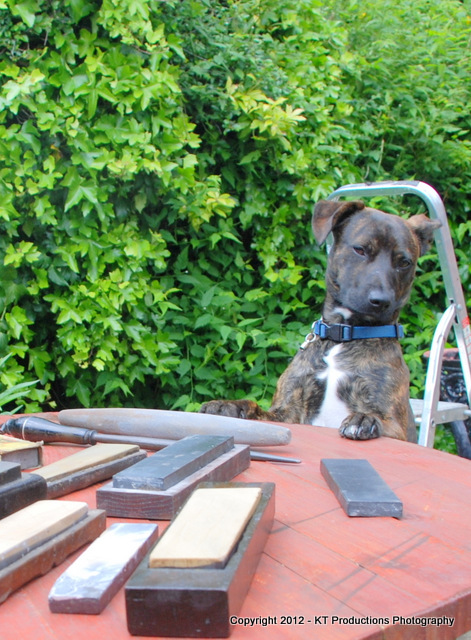
and those in the yellow and red packs are Yellow Lake Welsh Quarry....
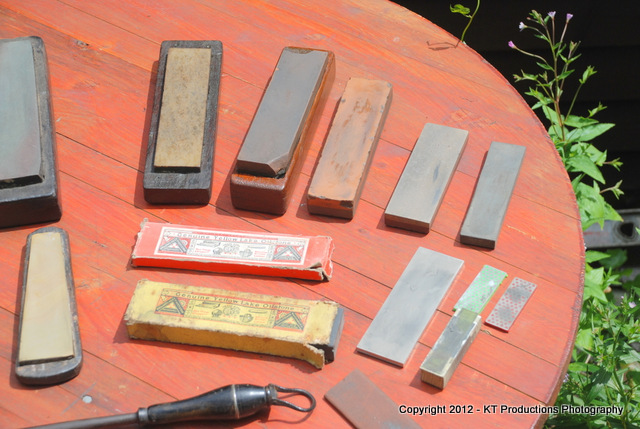
Without microscopic analysis...it is almost impossible to tell...sorry
Jim
Plain black whetstones are very difficult to identify without some guesses based on where it was found and any other clues.
I have a number of slates...all of which are Welsh and they produce quite a nice edge on tools...particularly the Yellow Lake ones...
I'll hand over to ALFIE....this one on the right is a Welsh slate...

and those in the yellow and red packs are Yellow Lake Welsh Quarry....

Without microscopic analysis...it is almost impossible to tell...sorry
Jim
Thank you for that Jim, I think you're right, certainly seems like slate to me. I have some old Norton India oil stones and a couple of Norton Novaculite stones, how would a slate stone compare?
jimi43
Established Member
carpenteire2009":8ee3hl9t said:Thank you for that Jim, I think you're right, certainly seems like slate to me. I have some old Norton India oil stones and a couple of Norton Novaculite stones, how would a slate stone compare?
Depending on the grade of stone and using Yellow Lake as the example...
Fine has a cutting speed 6% of that of a Fine India stone is 38% as rough and is composed of largely Si02 and petrologically is classed as a Hornfels. It is nearly black in colour.
The courser version has a cutting speed 46% of that of Fine India stone is 18% as rough and is composed of course crystals of silicon dioxide and is considered to be a calcareous siltstone.
(Data from Natural 19th and Early 20th C Sharpening Stones and Hones...a TATHS publication)
Does that help? :mrgreen: :wink:
Jimi
I think so! Thanks for your advice, I look forward to putting the stone to use.
Regards
Marc
Regards
Marc
Cheshirechappie
Established Member
A question about Slate sharpening stones - do you use oil or water as the lubricant?
(I have to admit that I don't know much about natural sharpening stones, but read somewhere that slate stones were the ones preferred for sharpening surgical instruments back in the day - very slow cutting, but producing a very fine edge, apparently.)
(I have to admit that I don't know much about natural sharpening stones, but read somewhere that slate stones were the ones preferred for sharpening surgical instruments back in the day - very slow cutting, but producing a very fine edge, apparently.)

£19.99
Respirator Mask,Safety Dust Face Cover,Dust Face Cover Paint Face Cover,Gas Mask With Filter,For Paint,Dust And Formaldehyde,Sanding,Polishing,Spraying And Other Work
ShenZHEN CIRY MINGYANG LITIAN ELECTRONIC ECOMMERCE

£12.50 (£1,250.00 / kg)
£14.45 (£1,445.00 / kg)
JSP M632 FFP3moulded Disposable Dustmask (Box of 10) One Size suitable for Construction, DIY, Industrial, Sanding, dust protection 99 Percent particle filtration Conforms and Complies to EN 149
Amazon.co.uk

£238.91
£360.17
Trend Portable Benchtop Router Table with Robust Construction for Workshop & Site Use, 240V, CRT/MK3
Amazon.co.uk

£24.99
Facemoon Reusable Masks,Safety Masks,Dual Filter Masks, Paint, Dust, Epoxy Resin, Construction, Welding, Sanding, Woodworking, Chemical Reusable Gas Masks
ShenZHEN CIRY MINGYANG LITIAN ELECTRONIC ECOMMERCE
bugbear
Established Member
Cheshirechappie":3b46bo1y said:A question about Slate sharpening stones - do you use oil or water as the lubricant?
(I have to admit that I don't know much about natural sharpening stones, but read somewhere that slate stones were the ones preferred for sharpening surgical instruments back in the day - very slow cutting, but producing a very fine edge, apparently.)
You're thinking of the (excellent) American Arkansas stones.
BugBear
jimi43
Established Member
In my experience...it it produces a slurry easily...then I tend towards water...
If not...light oil.
I tend towards using water even then..it just seems cleaner. I always clean the tool afterwards with a rag soaked in Camellia Oil...just to prevent rusting but never had a problem.
The ones we were discussing above...Yellow Lake Quarry or LLYN MELYNLLYN in Wales....marketed by Salmens can be used with either water or oil...
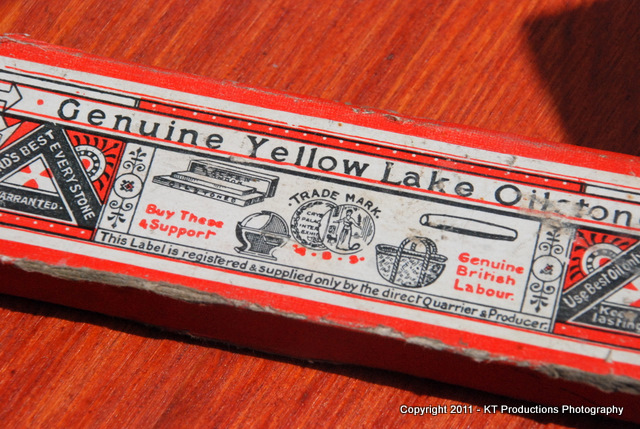
....there is quite a good description with pictures HERE
Most Welsh (or other) slates I have encountered are relatively fast cutting with a slurry made up.
Jim
If not...light oil.
I tend towards using water even then..it just seems cleaner. I always clean the tool afterwards with a rag soaked in Camellia Oil...just to prevent rusting but never had a problem.
The ones we were discussing above...Yellow Lake Quarry or LLYN MELYNLLYN in Wales....marketed by Salmens can be used with either water or oil...

....there is quite a good description with pictures HERE
Most Welsh (or other) slates I have encountered are relatively fast cutting with a slurry made up.
Jim
Cheshirechappie
Established Member
Thanks Jim!
Bugbear - I found the reference I was thinking of - it was in 'Sharpening, the Complete Guide' by Jim Kingshott - but I hadn't remembered correctly. The stone he referenced was Snowdon Greenstone - rare, apparently.
Bugbear - I found the reference I was thinking of - it was in 'Sharpening, the Complete Guide' by Jim Kingshott - but I hadn't remembered correctly. The stone he referenced was Snowdon Greenstone - rare, apparently.
arnoldmason8
Established Member
Hi carpenteire2009 - I have several slate stones that look similar to yours but I have had very little sucess with using them!! They seem to "pick up" the material of the stone which forms a small hard lump on the metal which then sratches the surface of the stone and is very difficult to remove. Because of this I do no use them normally - Perhaps I am not using the correct tecnique.
My normal sharpening routine is to use a Norton fine stone and then a few rubs on a Charnley Forest natural stone which is a lovley olive green colour. After a strop on dressed leather the tool is ready for use.
I also own an Arkansas Lillywhite stone to which BugBear refers. This is like a tranlucent white marble but is so fine it hardly removes any metal but does give a ultra polished surface if you have the patience.
Happy sharpening Arnold
My normal sharpening routine is to use a Norton fine stone and then a few rubs on a Charnley Forest natural stone which is a lovley olive green colour. After a strop on dressed leather the tool is ready for use.
I also own an Arkansas Lillywhite stone to which BugBear refers. This is like a tranlucent white marble but is so fine it hardly removes any metal but does give a ultra polished surface if you have the patience.
Happy sharpening Arnold
jimi43
Established Member
I am with you there on the Charnleywood for polishing Arnold...
I have to say that following this picture...
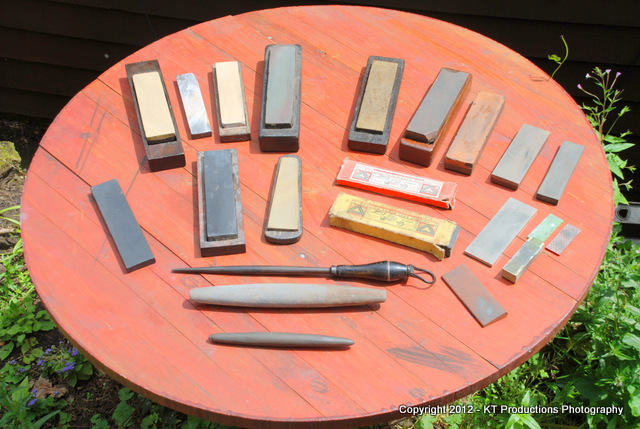
...which was the count in June....I seem to have acquired a "few" more....a Tam O'Shanter/Dalmore Scottish hone from Ayr....
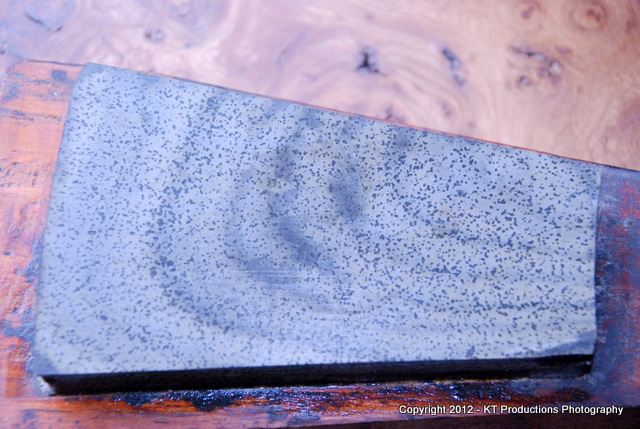
...which is now my favourite. It cuts really fast...makes a slurry like a coticule....and is equally as fine.
I have found this one at the weekend (see bootfair thread).....
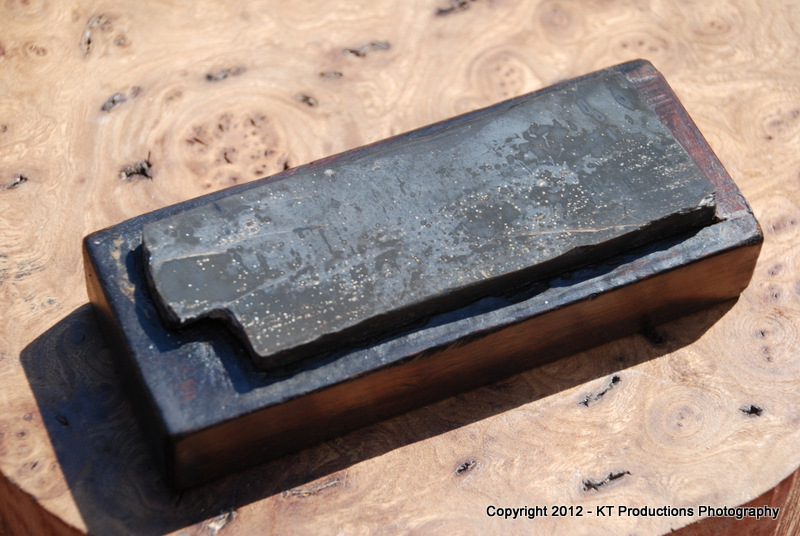
...which has an amazing surface....
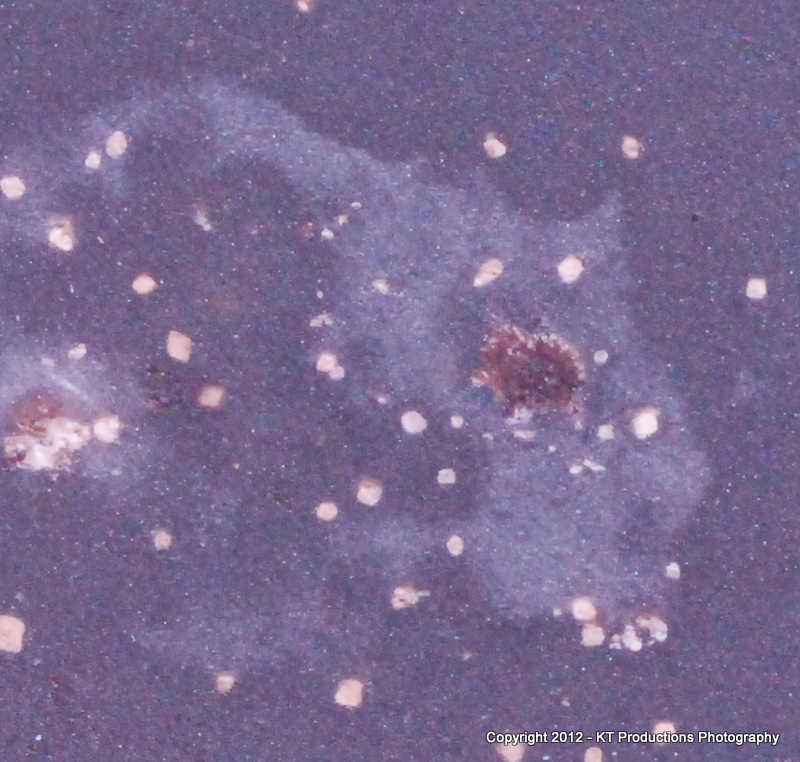
Now this cuts like the slates I have...Heaven knows what it is...but it polishes really well.
Douglas has three to play with this week...a Belgian coticule...a Welsh slate and that one...let's see what he says in his review.
With the trouble with gumming up...the slates work well with a slurry created by another slate or diamond stone...and keep ensuring that the water is supplied on a regular basis if it is a fine stone....this will stop the metal mixing with dry stone and release fresh cutting surfaces. Oil also dries and gums in my experience!
Jim
I have to say that following this picture...

...which was the count in June....I seem to have acquired a "few" more....a Tam O'Shanter/Dalmore Scottish hone from Ayr....

...which is now my favourite. It cuts really fast...makes a slurry like a coticule....and is equally as fine.
I have found this one at the weekend (see bootfair thread).....

...which has an amazing surface....

Now this cuts like the slates I have...Heaven knows what it is...but it polishes really well.
Douglas has three to play with this week...a Belgian coticule...a Welsh slate and that one...let's see what he says in his review.
With the trouble with gumming up...the slates work well with a slurry created by another slate or diamond stone...and keep ensuring that the water is supplied on a regular basis if it is a fine stone....this will stop the metal mixing with dry stone and release fresh cutting surfaces. Oil also dries and gums in my experience!
Jim
Some fantastic info there guys, what did we do before the internet? I've been using mostly Japanese waterstones up to now but can't resist picking up old stones from boot sales and the like, thus my interest in these old stones. Great to learn about these here!
raffo
Established Member
I've also experienced this. I assumed it was due to a hard inclusion in the stone being picked up by the steel, creating a scratch. Slates are too soft and slow compared to a Washita or a fine India, I favor them for ww tools.Hi carpenteire2009 - I have several slate stones that look similar to yours but I have had very little sucess with using them!! They seem to "pick up" the material of the stone which forms a small hard lump on the metal which then sratches the surface of the stone and is very difficult to remove. Because of this I do no use them normally - Perhaps I am not using the correct tecnique.
johnnyb
Established Member
Lillywhite washita( at least mine) is an opaque stone and fairly fast cutting. I think your referring to translucent arkansas. My washita has that fancy transfer on the back.
raffo
Established Member
Lily White Washitas were offered in "hard" and "soft" grades. The grade sticker was usually glued on one of the ends. The stone on the left is a hard Lily White Washita, the one on the right is a hard Arkansas (aka translucent). The pores are visible by the naked eye on the Washita stones, the hard ark is more glassy in appearance and you can't see the pores.
Soft Washitas are preferable to hard ones since they're a bit more aggressive and work really well with ww tools.


Soft Washitas are preferable to hard ones since they're a bit more aggressive and work really well with ww tools.


Similar threads
- Replies
- 5
- Views
- 2K


































